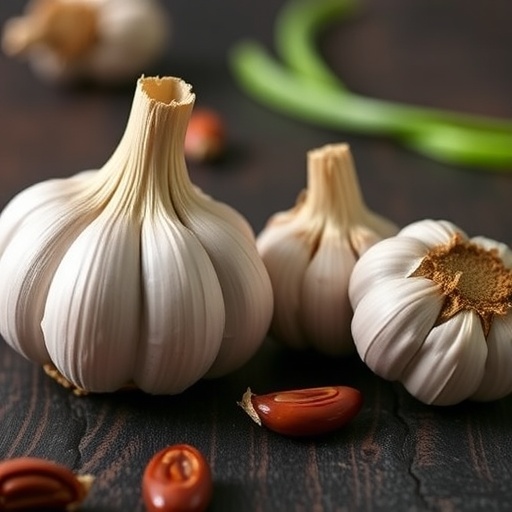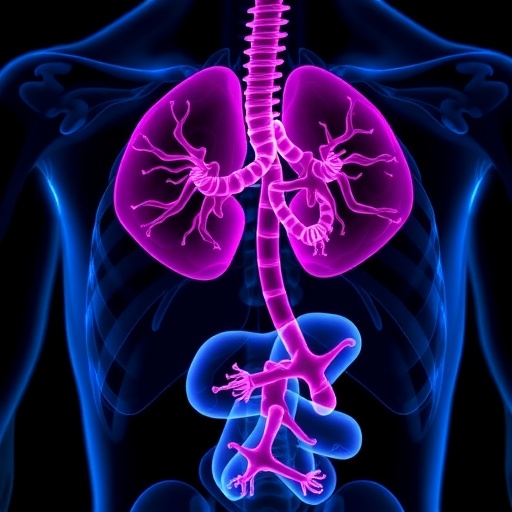A Revolutionary Advance in Leukemia Treatment: Garlic Extract Targets Cancer Stem Cells in Acute Myeloid Leukemia
In the relentless pursuit of effective therapies for acute myeloid leukemia (AML), a malignant hematologic cancer notorious for its aggressive progression and treatment resistance, researchers have unveiled a groundbreaking ex vivo study that shines a new light on the therapeutic potential of natural compounds. The latest findings demonstrate that extracts derived from Allium sativum, commonly known as garlic, can significantly impair the viability of AML cells, including the elusive leukemia stem cell (LSC) populations that are widely regarded as the root cause of relapse and poor prognosis in AML patients.
Despite decades of research and therapeutic advancements, AML remains a formidable clinical challenge. Conventional chemotherapeutic regimens often achieve initial remission, yet many patients encounter relapse due to residual LSCs that possess the ability to self-renew and evade standard treatments. Consequently, targeting these stem-like leukemic cells has become a focal point in hematology-oncology research, driving scientists to seek novel agents capable of eradicating these resilient cell populations.
The investigative team led by Abdelkarim and collaborators undertook a meticulous ex vivo evaluation of garlic extract’s effects on AML cellular models, focusing particularly on its impact on both the bulk leukemia population and the rarer, drug-resistant stem cell subsets. Employing sophisticated cellular assays and molecular profiling techniques, the researchers provided compelling evidence that garlic’s bioactive compounds exert cytotoxic effects on AML cells through multiple mechanistic pathways.
Central to their findings was the observation that Allium sativum extract induces apoptosis—a programmed cell death pathway critical for eliminating malignant cells—in AML blasts. This apoptotic induction was not limited to the general leukemic cell pool, as the study revealed a pronounced susceptibility of leukemia stem cells to the treatment. By impairing the stemness properties and proliferative capacity of LSCs, the extract essentially targets the disease’s root, potentially preventing the recurrence that plagues current AML therapeutic outcomes.
Moreover, the study’s insight into the molecular underpinnings of garlic extract’s anticancer activity highlights its ability to modulate key signaling cascades implicated in leukemogenesis. Notably, the downregulation of NF-κB and PI3K/AKT pathways was observed, both of which serve as pivotal survival and proliferation circuits in AML cells. The interruption of these signals disrupts cellular homeostasis, leading to reduced leukemic cell viability and enhanced sensitivity to cell death.
What sets this research apart from previous natural product evaluations is its focus on ex vivo conditions that closely recapitulate the human hematopoietic microenvironment. By investigating primary AML patient samples rather than immortalized cell lines alone, the study ensures that the biological relevance of the therapeutic effect is preserved, strengthening the translational potential of garlic extract as an adjunct or alternative treatment for AML.
In this context, the historical culinary staple—garlic—transcends its traditional role, revealing a sophisticated pharmacopeia of organosulfur compounds, flavonoids, and polyphenols capable of radical antineoplastic activity. These compounds’ synergistic effects contribute to oxidative stress induction within leukemic cells, mitochondrial dysfunction, and the inhibition of multi-drug resistance proteins, collectively orchestrating a multifaceted assault on AML cell survival.
Furthermore, the study accentuates the importance of natural product research in oncology, illustrating how centuries-old herbal knowledge can converge with modern molecular medicine to yield promising therapeutic avenues. The potential to harness a well-tolerated, inexpensive, and readily accessible agent like garlic extract carries profound implications for global healthcare, especially in resource-limited settings where advanced chemotherapeutics may be untenable.
While these findings ignite optimism, the authors prudently acknowledge the necessity for comprehensive clinical trials to validate safety, dosing parameters, and long-term efficacy in AML patients. The heterogeneity of acute myeloid leukemia and the complex interplay of genetic mutations underscore the need to tailor any emerging treatments within precision medicine frameworks.
Beyond AML, the implications of this research ripple through the broader oncology community, inviting exploration of garlic’s antitumoral properties in other cancers marked by resistant stem cell compartments. The challenges to standard therapy posed by cancer stem cells are a unifying obstacle, and the discovery of natural compounds capable of overcoming this barrier is a beacon of hope for improved patient survival rates.
As the scientific community digests these compelling data, a new chapter in integrative oncology emerges—one where the integration of botanical extracts with conventional medicine could redefine cancer care paradigms. The prospect of incorporating Allium sativum-based therapies might not only improve treatment responses but could also mitigate the adverse effects of aggressive chemotherapy by allowing for reduced drug doses.
Simultaneously, the research reaffirms the critical role of ex vivo studies in bridging the gap between in vitro experiments and in vivo clinical applications. By replicating patient-like conditions, ex vivo methodologies afford nuanced insights into drug responses that are more predictive of clinical realities, enhancing the accuracy and reliability of preclinical evaluations.
Intriguingly, the study’s methodological rigor, including the isolation and characterization of leukemia stem cell populations, sets a new standard for natural product research in hematologic malignancies. This paves the way for future investigations into molecular biomarkers that predict responsiveness to garlic extract, enabling stratified patient selection and personalized therapy optimization.
From a pharmacological perspective, the identification of specific active ingredients within garlic extract that mediate the observed anticancer effects will be crucial in developing standardized formulations with consistent potency. Advances in compound purification and high-throughput screening can accelerate the refinement of these bioactives into clinically viable drugs.
In summary, the pioneering study led by Abdelkarim et al. uncovers the transformative potential of Allium sativum extract in combating acute myeloid leukemia by directly targeting leukemia stem cells and key oncogenic pathways. This research not only revitalizes interest in natural product oncology but also charts a hopeful trajectory toward more effective, less toxic cancer treatments. As the scientific and medical communities eagerly await clinical trial outcomes, the humble garlic bulb may well become a cornerstone in the future armamentarium against leukemia.
Subject of Research: Ex vivo evaluation of Allium sativum (garlic) extract effects on acute myeloid leukemia cells and leukemia stem cell populations
Article Title: Ex vivo evaluation of Allium sativum extract on acute myeloid leukemia cells and leukemia stem cell populations
Article References:
Abdelkarim, M., Kharrat, R., Lakhal, F.B. et al. Ex vivo evaluation of Allium sativum extract on acute myeloid leukemia cells and leukemia stem cell populations. Med Oncol 42, 536 (2025). https://doi.org/10.1007/s12032-025-03104-6
Image Credits: AI Generated
Tags: acute myeloid leukemia researchAllium sativum health benefitscancer relapse prevention methodsex vivo cancer cell studiesgarlic extract anti-cancer propertiesGarlic extract in leukemia treatmentHematology Oncology advancementsinnovative AML treatment strategiesleukemia stem cells targetingnatural compounds for cancer therapynovel therapies for aggressive cancersovercoming treatment resistance in AML






